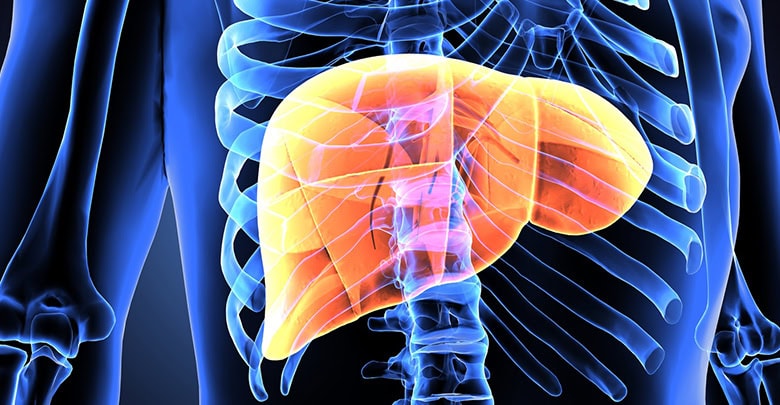Diasome’s Liver Targeted Insulin
Nanotechnology Insulin Additive Improves Action Profiles and Potentially Reduces Required Doses


We spoke with Robert Geho, CEO of Diasome Pharmaceuticals, Inc. — www.diasome.com — about its nanotechnology additive that delivers insulin to the liver where it can substantially improve T1D glucose control.
Normal vs Injected Insulin
In normal human physiology, the liver stores glucose at mealtime when insulin is released by the pancreas to prevent hyperglycemia and releases glucose when it senses glucagon to prevent hypoglycemia. This critical capability of the liver is mostly bypassed with injected insulin since nearly all of this insulin is absorbed by muscle and fat and does not reach the liver.
In contrast, muscle doesn’t have glucagon receptors, so injected glucagon must directly stimulate liver action for glucose release to counteract hypoglycemia.
Without liver-regulated glucose control, managing blood glucose is much more difficult. Faster and longer-acting insulins help, as do pumps and CGMs, but the fine-grained control of liver function promises much better control for people with T1D.
Strong Bonds
Diasome nanotechnology creates strong bonds with insulin molecules that prevent insulin absorption by muscle and fat and enables that insulin to reach the liver where it can support normal physiological function.
These strong bonds do not slow insulin action or diminish the duration of action. In fact, early studies show that getting more insulin to the liver speeds initial action and improves time in range.
The company has developed hepatocyte directed vesicle (HDV) nanotechnology as an insulin additive. Their HDV nanotechnology is insulin-agnostic and has the potential to improve the safety and efficacy of all insulins by restoring the liver’s natural role in glucose control. This applies to basal and bolus insulins, whether dosed via MDI or pumps.
Shelf Life
HDV has the same shelf life as insulin or better, whether refrigerated or at room temperature. The combined HDV insulin product may be more stable and have improved shelf life.
Phase 2 Study
Diasome’s Phase 2 study, which just started enrolling patients, is “designed to provide additional dosing guidance based on recently analyzed Phase 2 and Phase 2b clinical data,” said W. Blair Geho, M.D., Ph.D., chief scientific officer of Diasome.
This study is designed to optimize the ratio of long-acting to short-acting insulin therapies when using HDV.
This open-label, multicenter study will evaluate the effect of HDV added to insulin on a variety of standard diabetes outcomes including HbA1c, hypoglycemia, and bolus and basal insulin dosing in adult type 1 diabetes subjects whose starting HbA1c levels are between 6.5% and 8.5%. Diasome intends to enroll approximately sixty participants who will undergo a three-month run-in period on the standard of care therapy followed by three months of treatment with HDV plus insulin along with different long-acting insulin dosing rates.
Douglas Muchmore, M.D., chief technology officer of Diasome, said, “As the most clinically advanced developer of liver-targeted insulin in the industry, we continue to address where insulin goes after it is injected because of the critical importance of the liver in glucose metabolism.”
Solution Needed
Recent data from the top 80 US endocrinology clinics showed that mean A1C increased from 7.8% to 8.4% in the period 2010 to 2016 despite increased uptake of medical device technologies such as insulin pumps, continuous glucose monitoring use and faster, longer acting insulins.
Tremendous strides have been made and more advances are coming but the cost of these advanced technologies and insulins is a huge barrier to wider adoption,” said Robert Geho. “We believe that Diasome’s better biodistribution of insulin could provide much more cost-effective improved glucose control and could see wide adoption.”
Liver Toxicity
Lilly and Novo abandoned their efforts to develop an insulin additive that limited fat and muscle absorption. Lilly went the farthest in its efforts, but its clinical trials showed unexpected liver fat and enzyme toxicity.
Diasome’s approach does not change the underlying structure of insulin.
Instead, their approach is based on a charge-based bonding of the insulin molecules. This non-chemical approach has not shown any liver toxicity issues.
Phase 3 Timing
Diasome expects to begin Phase 3 Clinical Trials in early 2020 and if approved, hopes to have HDV additives in the market by 2022.
Dosing Scenarios
There are multiple ways in which Diasome envisions HDV’s integration into patient treatment.
- Diasome would welcome partnering with insulin manufacturers such as Novo and Lily such that HDV was pre-mixed with insulins
- Local pharmacies could add HDV to insulin vials they sell
- Individual patients could add HDV to insulin they have purchased
Diasome has tested a broad range of HDV-to-Insulin mixture ratios and believes that HDV has a wide safety margin so patient mixing could be feasible.
One very interesting aspect of HDV is that when mixed with older insulins the action profiles of these off patent and cheaper insulins are much improved which could lead many people to re-adopt NPH into their insulin regimen.
Company
![]() Diasome has an oral HDV insulin capsule in its development pipeline. This oral capsule also has great promise because the HDV liver targeting system enables oral doses of insulin that are similar to injected insulin doses. Usually, much larger oral insulin doses are required because of the digestive system’s ability to break insulin molecules down, but the HDV insulin appears to protect insulin from this barrier.
Diasome has an oral HDV insulin capsule in its development pipeline. This oral capsule also has great promise because the HDV liver targeting system enables oral doses of insulin that are similar to injected insulin doses. Usually, much larger oral insulin doses are required because of the digestive system’s ability to break insulin molecules down, but the HDV insulin appears to protect insulin from this barrier.
Diasome was founded in 2004 and has raised multiple rounds of funding, including support from the JDRF T1D Fund in Boston. The most recent funding was in October 2018.
Supporting Research
Targeting insulin to the liver corrects defects in glucose metabolism caused by peripheral insulin delivery — article link
State of Type 1 Diabetes Management and Outcomes from the T1D Exchange in 2016–2018 — Diabetes Technology & Therapeutics, Volume 21, Number 2, 2019, DOI: 10.1089/dia.2018.0384